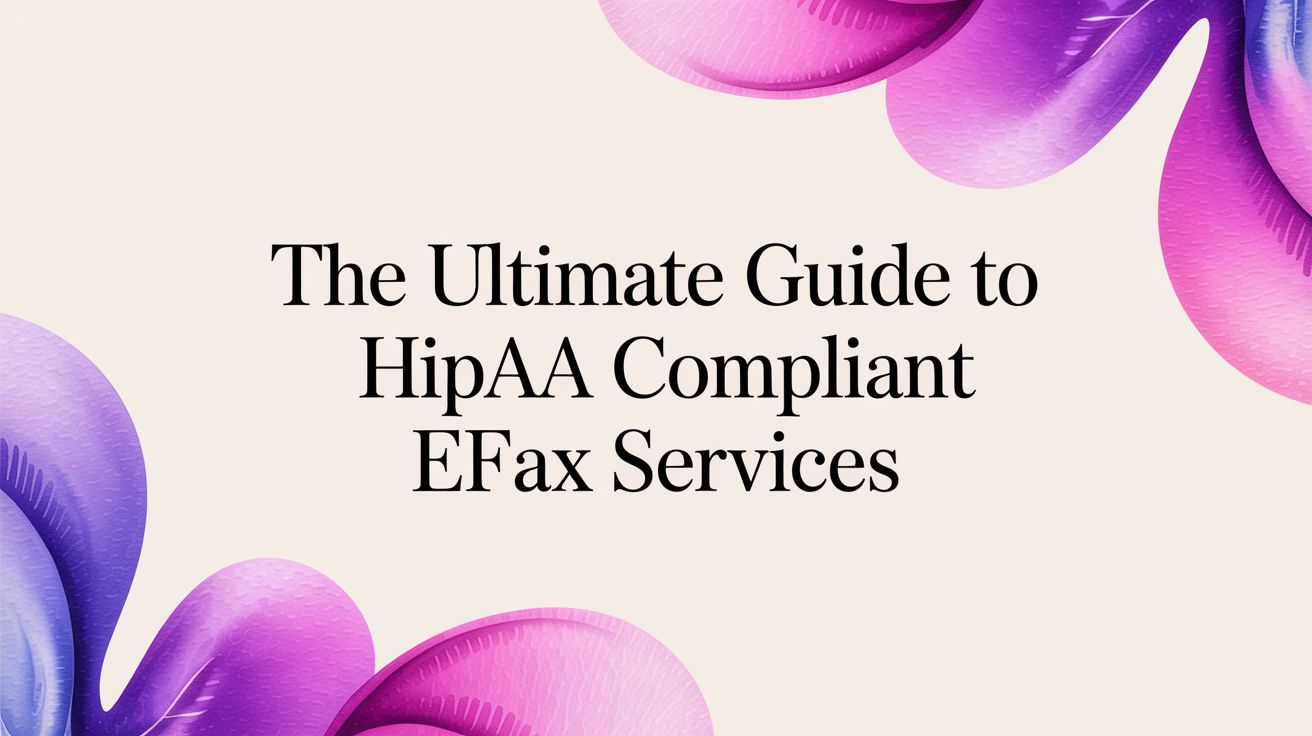HIPAA Compliance and Faxing: What Healthcare Providers Need to Know

Table of Contents
Healthcare providers face complex regulatory requirements when transmitting patient information. Understanding HIPAA compliance for fax communications is crucial for maintaining legal compliance and patient trust.
Ready To Fax?
Start sending faxes online in seconds with FaxZen - No account required
Send Fax Now 🚀The Health Insurance Portability and Accountability Act allows fax transmission of Protected Health Information when appropriate safeguards are implemented, making faxing a widely accepted method for healthcare document sharing.
HIPAA's Fax Transmission Framework
HIPAA recognizes fax as legitimate for sharing Protected Health Information, but requires covered entities to implement reasonable safeguards. The key principle is ensuring patient information reaches only intended recipients.
This applies whether using traditional fax machines or modern services like FaxZen, though digital services often provide superior compliance capabilities through automated logging and enhanced security.
| HIPAA Requirement | FaxZen Solution |
|---|---|
| Encryption during transmission | 256-bit SSL encryption |
| Access controls | User authentication & permissions |
| Audit trails | Comprehensive transmission logs |
| Delivery confirmation | Real-time status updates |
Administrative Safeguards
Healthcare organizations must establish policies governing fax transmissions. This includes designating a HIPAA security officer and implementing access controls ensuring only authorized personnel send patient information.
FaxZen supports these requirements through individual user accounts with appropriate permissions and detailed logging of transmission activities.
Physical vs. Digital Security
Traditional fax machines present unique security challenges. Documents in output trays can be viewed by unauthorized personnel, and physical machine access provides transmission log access.
Online services like FaxZen eliminate these concerns by sending faxes from a computer or phone and delivering them electronically to secure portals rather than printing automatically. This reduces unauthorized access risk while providing superior audit capabilities.
Technical Safeguards
HIPAA requires appropriate encryption for electronic patient information transmission. FaxZen provides end-to-end encryption meeting HIPAA requirements using the same protocols protecting online banking.
Best Practices for Healthcare Faxing
Verification procedures are critical for HIPAA-compliant transmission. Healthcare providers must verify recipient fax numbers before transmitting patient information. This involves:
- Maintaining approved fax number databases
- Implementing double-verification for new numbers
- Using services providing delivery confirmation
- Including proper confidentiality notices on cover pages
Choosing Compliant Services
When selecting online fax services for healthcare, organizations must verify HIPAA compliance features and obtain signed Business Associate Agreements establishing legal frameworks for patient information protection.
Common Compliance Pitfalls
Transmission errors represent common HIPAA challenges. Sending patient information to incorrect numbers can result in significant breaches with serious consequences. Using services with delivery confirmation minimizes this risk.
Inadequate access controls and poor documentation practices create additional compliance vulnerabilities that healthcare organizations must address through robust policies and regular audits.
The Future of Healthcare Faxing
Healthcare increasingly recognizes that online fax services provide superior HIPAA compliance compared to traditional machines. FaxZen offers security, documentation, and control features modern healthcare requires while simplifying compliance through automated processes.
As healthcare digitizes and regulations evolve, maintaining HIPAA compliance while efficiently transmitting patient information becomes increasingly important for organizations of all sizes.



